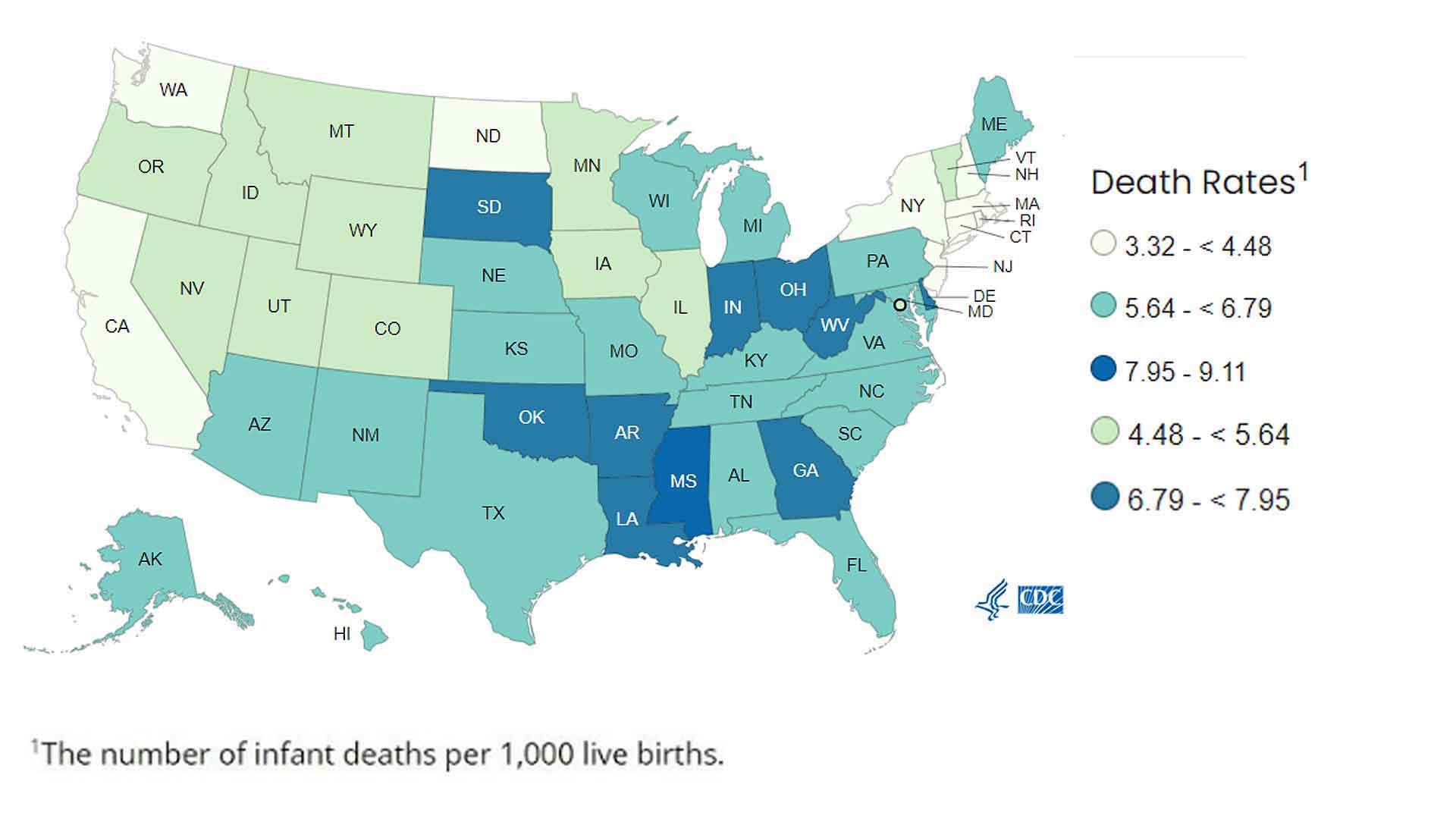At a glance
Causes of infant mortality
More than 20,500 infants died in the United States in 2022. The five leading causes of infant death in 2022 were:
- Birth defects.
- Preterm birth and low birth weight.
- Sudden infant death syndrome.
- Unintentional injuries (e.g., car crashes).
- Maternal pregnancy complications.
Visit Mortality in the United States, 2022 for more information.
Infant mortality rates by state, 2022
View the Infant Mortality Rates by State Map from the National Center for Health Statistics.

Healthy People provides science-based, 10-year national objectives for improving the health of all Americans. One of the Healthy People objectives is to reduce the rate of all infant deaths. In 2022, 15 states met the Healthy People 2030 target of 5.0 infant deaths or less per 1,000 live births. Geographically, infant mortality rates in 2022 were highest among states in the South and in the Midwest.
Infant mortality rates by race and ethnicity, 2022
In 2022, infant mortality rates (per 1,000 live births) by race and ethnicity were as follows:
- Non-Hispanic Black: 10.9
- Non-Hispanic American Indian and Alaska Native: 9.1
- Non-Hispanic Native Hawaiian or other Pacific Islander: 8.5
- Hispanic: 4.9
- Non-Hispanic white: 4.5
- Non-Hispanic Asian: 3.5
For brevity, text does not include the term "single-race."
All records that indicated Hispanic ethnicity are classified as Hispanic regardless of race.
CDC activities
CDC is committed to improving infant outcomes. CDC and other public health agencies work with health care providers, communities, and other partners to reduce infant mortality. This joint approach can help address social, behavioral, and health risk factors that contribute to infant mortality.
CDC provides support to 36 Perinatal Quality Collaboratives (PQCs). PQCs are state or multistate networks of multidisciplinary teams working to improve the quality of care for mothers and babies.
The Maternal and Child Health Epidemiology Program (MCHEP) assigns epidemiologists and fellows to states, localities, and tribes. These assignees support epidemiologic research and provide scientific information to improve maternal and child health programs and policies.
Through the SUID and Sudden Death in the Young (SDY) Case Registry, CDC supports monitoring programs in 32 sites. Participating sites can use data about SUID trends and circumstances to develop strategies to reduce future deaths.
The Pregnancy Risk Assessment Monitoring System (PRAMS) collects data on attitudes and experiences before, during, and after pregnancy. PRAMS data can be used to measure progress toward goals in improving the health of mothers and infants.
CDC provides technical support to states to implement the CDC Levels of Care Assessment ToolSM (CDC LOCATeSM) This helps states to map and strengthen systems of risk-appropriate care to make sure moms and babies get the right care, in the right place, at the right time.
Related links
CDC's National Center on Birth Defects and Developmental Disabilities
To find provisional and final data, see Linked Birth and Infant Death Data from CDC's National Center for Health Statistics
Drowning prevention information and child passenger safety resources from CDC's National Center for Injury Prevention and Control
